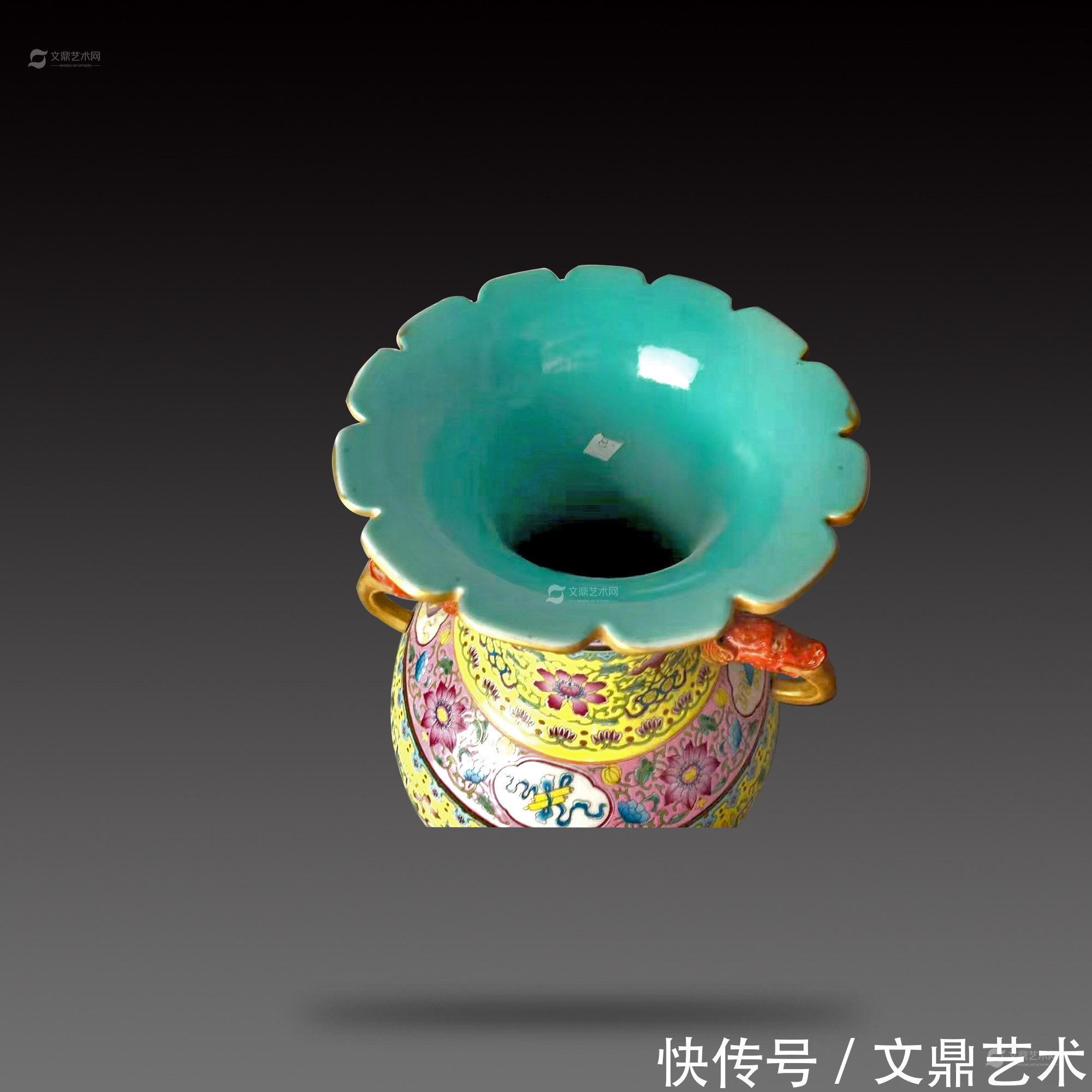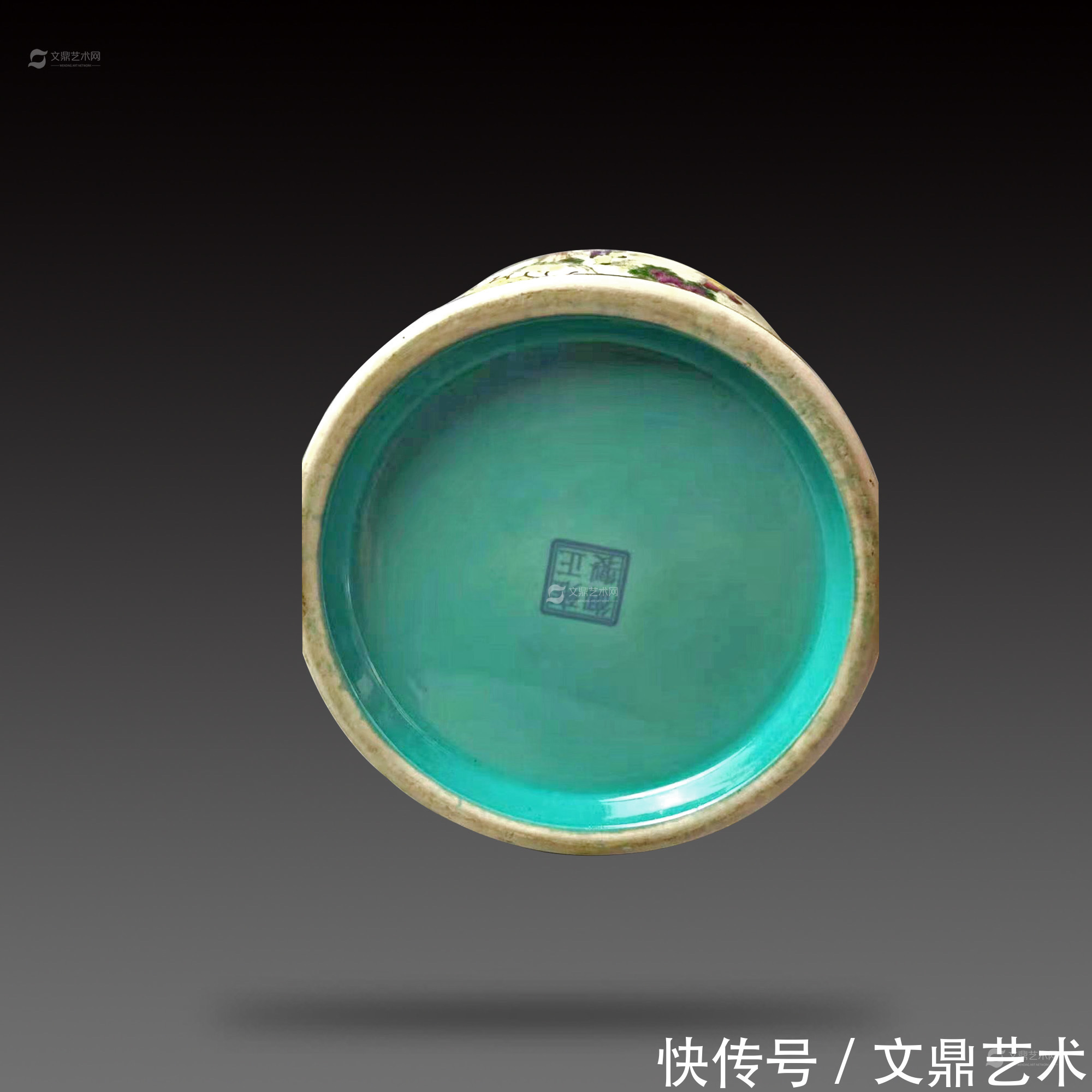藏品规格高:51.5cm口:21珐琅彩瓷器的出现是瓷器发展史上的一个必然产物珐琅彩瓷器的前就身是景泰蓝,也就是所谓的“画珐琅”。它兴起于明代,是在铜胎上以蓝为背景色,掐以 铜丝,再填上红、黄、蓝、绿、白等色釉烧制而成的工艺晶。清代康熙年间这种“画珐琅”的方法被用在瓷胎上,其吸取了铜胎画珐琅的技法,在瓷质的胎上,用各种珐琅彩料描绘而成的一种新的釉上彩瓷。雍容华贵的珐琅彩问世,虽与“康熙盛世”有关,但与雍正的关系更为重要。雍正登基后,对社会进行了一番改革,大大提高了景德镇制瓷艺人的社会地位。而且雍正酷爱精美绝伦的瓷器,经常对宫廷瓷器加以评价,亲自过问,并派得力的官员去管理瓷业生产。康熙、雍正年制作珐琅彩时,先在景德镇官窑中选出最好的原料烧制成素胎送至宫廷,由宫廷画师加彩后在宫中第二次入低温炉烘烤而成。

文章插图
【 康熙|大清雍正年珐琅彩】珐琅彩的彩料还有“洋为中用”的成分。五彩和粉彩中都不含的化学成份“硼”珐琅彩 中有:珐琅彩中含“砷”;康熙前的瓷器中黄色为氧化铁,而珐琅彩中黄色的成分是氧化锑; 珐琅彩还有用康熙前没见过的胶体金着色的金红。上述化学成分分析说明了珐琅彩是国外引 入的,文字上也有记载,宫中原名《瓷胎画珐琅》的档案于乾隆八年改名《瓷胎洋彩》由此可见珐琅彩确是欧洲进口,由此更可见康熙帝国时中外文化与贸易交往的盛况。

文章插图
珐琅彩最初是在法国发扬光大,在明初才传到我国,而清宫珐琅彩珍惜而名贵,是因为当时清朝宫内对工匠的垄断而民间没有所以流传下来的也就非常少,所以近年来在国际拍卖市场上的价格扶摇直上,人们对此趋之若鹜,各种层次的赝品也铺天盖地而来。在我们学习鉴定之前,有一些相关常识问题必需搞清楚,有一些必要的历史常识会防止我们犯比较低级的错误。清代珐琅彩是闪耀着宫廷艺术光辉的高档陈设瓷,出处清楚,血统高贵。上面谈到的四个条件必须具备,缺一不可,不能含糊,随随便便地将一件普通彩瓷轻易地定为珐琅彩显然“一相情愿”。

文章插图
Collection specification: 51.5cm mouth: 21 the emergence of enamel porcelain is an inevitable product in the history of porcelain development. Cloisonne porcelain is the former body of cloisonne, which is the so-called "painting enamel". It originated in the Ming Dynasty. It is a kind of craft crystal which is made of copper with blue as background color, copper wire and red, yellow, blue, green and white glaze. During the reign of Emperor Kangxi of Qing Dynasty, this method of "painting enamel" was used on porcelain body. It absorbed the technique of painting enamel with copper body. On the porcelain body, a new kind of overglaze colored porcelain was painted with various enamel materials. Although the appearance of the elegant enamel color was related to the prosperous period of Kangxi, the relationship with Yongzheng was more important. After Yongzheng ascended the throne, he reformed the society and greatly improved the social status of Jingdezhen porcelain making artists. Moreover, Yongzheng was very fond of exquisite porcelain. He often evaluated the court porcelain, personally asked about it, and sent competent officials to manage the porcelain industry. During the reign of Emperor Kangxi and Yongzheng, the best raw materials were selected from the official kilns in Jingdezhen and sent to the court. After being colored by court painters, they were baked in a low-temperature oven for the second time.
- 雍正|浙江一座宫殿式的神庙,地位之高不同凡响,堪称“江南紫禁城”
- 雍正|马未都:雍正仿古笔筒以假乱真,骗过了乾隆,我一看就知道是假的
- 康熙|发掘康熙女儿陵墓,出土一件稀世文物:专家称价值超1亿
- 写出|康熙6次南巡,4次住曹家,最终吃垮曹家,导致曹雪芹写出红楼梦!
- 大臣|康熙不跪孔子,大臣慌忙找了个布遮住1个字,立刻乖乖跪下了
- 隐藏|《雍正王朝》九子夺嫡中原来他也是隐藏极深的阴险之人
- 明朝|康熙下令诛他九族,但仔细一看姓名,康熙:杀不得,免官即可
- 宫闱逸事|康熙原配和乾隆原配,为何能得到他们一生宠爱?都有一个相同原因
- 宫闱逸事|康熙后宫的女子,连续为康熙生下3个儿子,雍正与乾隆都封她为妃
- 康熙|康熙在胤禛花园里,见到一个人,为何他突然明白该传位给谁
